|
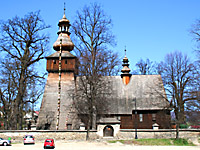
The old larch church in the resort
town of Rabka, 60 km south of
Krakow, dates from 1606 and has been turned to a local
museum in 1936.
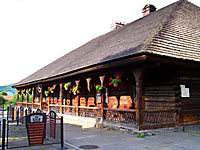
The 18th-century inn in the town of Sucha Beskidzka, some 60
km southwest of Krakow, is a notable landmark on 'The
Trail of Wooden Architecture' that meanders through the
entire Malopolska province.

Everywhere in the Malopolska province one finds countless
roadside shrines in various shapes and sizes, some of them
centuries old. The above stands by the busy road to Zakopane
in the village of Krzeczow, 50 km south of Krakow.
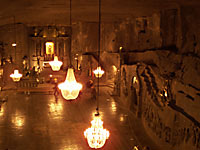
Wieliczka Salt Mine where 9 centuries of mining resulted
in subterranean world of labyrinthine passages, giant
caverns, underground lakes and chapels with sculptures in in
the salt rocks. 11 km from
Krakow's center.

Sanctuary of Kalawria Zabrzydowska, a
UNESCO World Heritage site, dates from the early 17th
century and is Europe's largest Calvary complex. 33 km from
downtown Krakow.
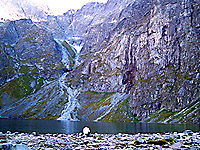
Tatry (Tatras, the Tatra Mountains), Poland's equivalent
of the Alps, stretch 120 km south of Krakow. The photo shows
Czarny Staw (Black Pond), the austere sister lake of nearby
glamorous Morskie Oko, a must-see in the Tatra National
Park.

'Hercules
Bludgeon', a rock in the Ojcow Nationa
Park near Krakow.

The town of Wadowice, the birthplace
of Pope John Paul II, is situated some thirty miles
southwest of Krakow. Swarming with Polish pilgrims, the
place also attracts many foreigners.

Niedzica castle upon Jezioro Czorsztynskie lake, a major
tourist attraction and recreational area 100 kilometers
south of Krakow.
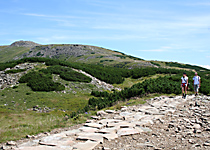
Babia Gora Mount, 1725 m above sea level, is the heart of
Babia Gora National Park and a popular hiking
destination.
|












